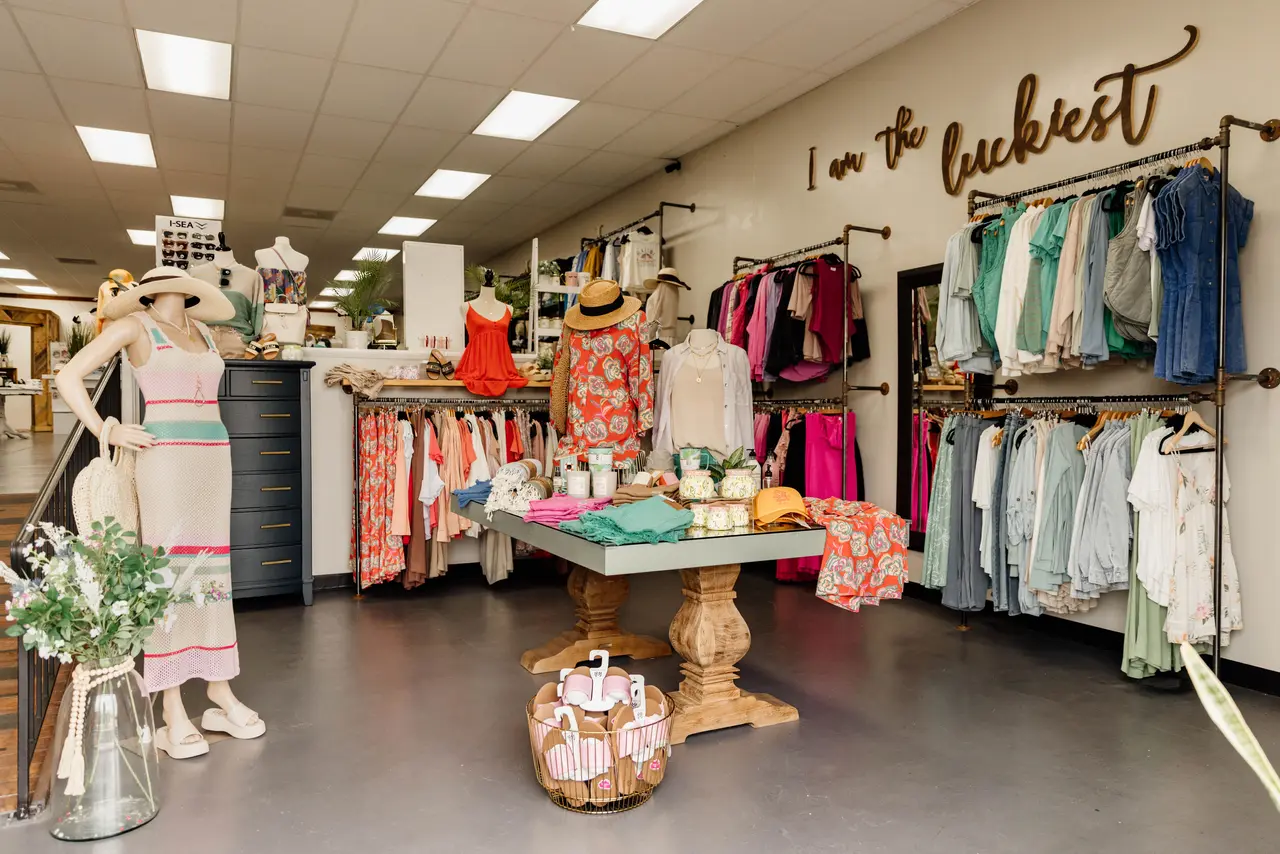Checking Out the Advancement and Impact of Garments on Modern Style Trends
The advancement of garments has significantly influenced modern-day style patterns, combining historic criteria with innovative developments. Famous numbers like Coco Chanel and Yves Saint Laurent transformed the fashion business by introducing concepts that prioritize comfort and availability, which continue to reverberate today. On the other hand, technical strides in locations such as 3D printing and clever textiles are redefining design possibilities and customer experiences. Furthermore, the expanding focus on inclusivity and sustainability is improving sector standards. As we take into consideration these multifaceted influences, one have to doubt exactly how these elements jointly redefine style's duty in showing and forming modern society.
Historical Style Influencers
In the tapestry of style background, specific figures have left an enduring mark, shaping the fads and styles that define whole periods. Coco Chanel, a revolutionary developer, redefined females's fashion by presenting comfortable, classy clothing that left from limiting bodices.
Elsa Schiaparelli is an additional pivotal number, renowned for her avant-garde styles that included surrealist art, collaborating with Salvador Dalí to develop whimsical items that tested conventional looks. Her innovative use of color and bold patterns reverberates in contemporary fashion. Yves Saint Laurent, meanwhile, equalized high fashion with prêt-à-porter collections, bringing runway designs to the masses and setting a precedent for modern-day ready-to-wear lines.
These enthusiasts, among others, not only reinvented style in their times but likewise established withstanding patterns that resonate in today's style sector, supplying a foundation upon which modern designers continue to innovate and develop. Their heritages underscore the importance of imagination and daring in vogue's ever-evolving story.
Technical Innovations in vogue
Among the vibrant landscape of the apparel industry, technical advancements stand at the leading edge of advancement, reshaping exactly how developers develop and customers engage with fashion. The integration of 3D printing has actually changed layout processes, enabling designers to experiment with intricate structures and sustainable products that were formerly impossible. This technology facilitates quick prototyping, reducing waste and accelerating manufacturing times.

Smart fabrics, embedding innovation into textiles, are also changing the industry. Technologies like temperature-regulating and self-cleaning fabrics use boosted capability and comfort. Wearable technology, integrating features like fitness monitoring and communication, includes a new measurement to style, combining looks with practicality.
Social Changes and Design
As technical developments continue to reshape the fashion business, cultural changes are similarly significant, redefining design and customer preferences. In the last few years, the rise of social media platforms has sped up the circulation of worldwide style trends, permitting diverse social impacts to exist side-by-side and converge. This digital interconnectivity has facilitated the rapid exchange of concepts, causing a more diverse and inclusive interpretation of style that reflects the complex nature of modern society.
Social understanding and appreciation have actually triggered designers to draw inspiration from a broader spectrum of ethnic and historical contexts, incorporating conventional motifs with contemporary looks. This combination has actually led to fashion that resonates with a bigger target market, promoting a feeling of identification and belonging throughout various demographics. In addition, the raising need for customization has driven brands to provide adjustable alternatives, making it possible for consumers to share originality while reflecting their cultural heritage.
In addition, shifting social worths have actually impacted fashion, with inclusivity and diversity coming to be central motifs. The market has actually begun why not look here to welcome designs and influencers of different type of body, ethnic backgrounds, and gender identifications, challenging traditional beauty standards. This change highlights the power of social changes fit the future of fashion, as design comes to be an extra genuine expression of personal and collective identity.
Sustainability and Modern Style
While the style industry remains to advance, the necessary for sustainability has come to be significantly immediate, influencing contemporary style methods. This change intends to resolve honest considerations and environmental issues, bring about a reevaluation of typical manufacturing methods. Designers are now incorporating sustainable materials, such as natural cotton, recycled polyester, and biodegradable textiles, right into their collections, minimizing the ecological impact of fashion. The rise of sluggish style, which emphasizes high quality over quantity, encourages consumers to purchase classic items instead of transient patterns.
Moreover, modern design is characterized by its technology in lessening waste and promoting circularity. Strategies such as zero-waste pattern cutting and 3D knitting are obtaining traction, allowing designers to create garments with minimal material wastefulness. Additionally, brands are taking on clear supply chains, making sure liability and fostering consumer trust fund. This technique not just alleviates environmental influence however additionally enhances the social responsibility of style houses.

Future Trends in Fashion

Sustainability will proceed to be a driving force in forming future fashion fads. The sector is increasingly adopting green materials and honest manufacturing approaches, replying to a growing customer demand for accountable practices. Advancements such as bio-fabricated materials and closed-loop recycling systems are set to redefine how clothes is produced and Read Full Article consumed, decreasing environmental influence while keeping design and high quality.
Social changes, including the surge of inclusivity and variety, will certainly likewise play a pivotal duty. As culture comes to be more familiar with social issues, style is anticipated to end up being a system for expression and change. Designers will likely concentrate on creating collections that show a wider series of identities and experiences, championing representation and accessibility.
Conclusion
The development of clothes significantly impacts modern style patterns, where historical impacts combine with modern designs. Trick numbers like why not try this out Coco Chanel and Yves Saint Laurent have actually redefined design, while technological advancements such as 3D printing and clever fabrics expand innovative possibilities. Cultural changes towards inclusivity and sustainability urge brands to adopt honest practices and accept diversity. This recurring advancement emphasizes fashion's role as a mirror to social values and technological development, suggesting a future rich with development and inclusivity.
The development of garments has dramatically affected contemporary fashion fads, merging historic criteria with innovative technologies.Amidst the dynamic landscape of the style sector, technological advancements stand at the leading edge of development, improving how developers develop and consumers involve with style.While the fashion market proceeds to progress, the crucial for sustainability has ended up being significantly immediate, affecting modern layout methods. As sustainability ends up being ingrained in contemporary style, it leads the way for a much more aware and liable fashion industry.
The advancement of garments substantially impacts contemporary fashion trends, where historic influences combine with contemporary styles.